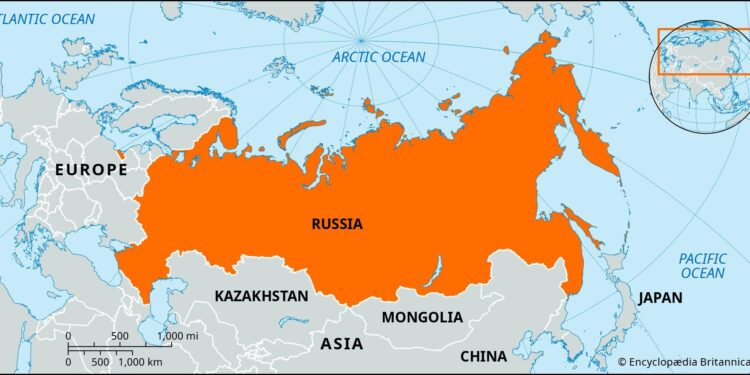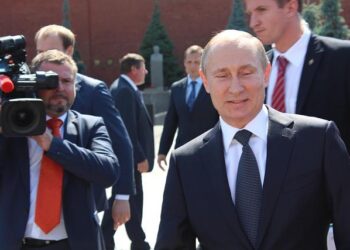Russia fell short of its OPEC+ oil production target in June, according to a report by Bloomberg cited by The Kyiv Independent. The shortfall comes amid ongoing challenges within the Russian energy sector and heightened geopolitical tensions affecting global oil markets. This development raises questions about Russia’s ability to influence supply dynamics within the OPEC+ alliance and the broader implications for international energy markets.
Russia Falls Short of OPEC+ Oil Production Target in June Impact on Global Energy Markets and Supply Dynamics
Russia’s inability to meet its OPEC+ oil production commitments in June has raised fresh concerns over the stability of global energy markets. Despite expectations, output fell short due to a combination of logistical challenges, maintenance issues, and geopolitical tensions. This shortfall has tightened supply dynamics at a time when global demand continues to rebound post-pandemic, contributing to heightened price volatility. Energy analysts warn that prolonged underproduction by such a key player could exacerbate supply shortages, impacting everything from refining margins to consumer fuel prices worldwide.
Key implications for the energy sector include:
- Increased pressure on other OPEC+ members to compensate for the deficit
- Potential shifts in crude trade flows, particularly toward Asia and Europe
- Heightened market speculation leading to possible price spikes
| Month | Russia’s Target (mb/d) | Actual Production (mb/d) | Shortfall (mb/d) |
|---|---|---|---|
| April 2024 | 10.5 | 10.4 | 0.1 |
| May 2024 | 10.5 | 10.3 | 0.2 |
| June 2024 | 10.5 | 10.1 | 0.4 |
Analyzing the Factors Behind Russia’s Underperformance and Its Economic Implications
Several factors have contributed to Russia’s inability to meet its OPEC+ production target in June, signaling deeper challenges within its oil sector. Operational setbacks in aging oil fields, combined with insufficient investment in new exploration and extraction technologies, have pressured output levels. Additionally, Western sanctions continue to impede Russia’s access to critical equipment and financing, further slowing production capacity expansion. Internally, maintenance issues and workforce constraints stemming from geopolitical tensions add layers of complexity to sustaining consistent output.
- Sanctions Impact: Restricted imports of high-tech drilling machinery.
- Infrastructure Aging: Declining efficiency in mature oil fields.
- Capital Flight: Reduced foreign investment reducing modernization efforts.
- Geopolitical Risks: Decreased labor mobility and operational disruptions.
The economic implications of this shortfall ripple beyond Russia’s borders. Domestically, lower oil revenues threaten federal budgets, increasing fiscal strain amid wide-ranging economic sanctions and global market volatility. Internationally, Russia’s diminished supply contributes to tighter oil markets, forcing other OPEC+ members to adjust their production to stabilize prices. This shift has the potential to fuel global inflationary pressures on energy costs while pushing energy-importing nations to accelerate alternative supply and demand strategies.
| Impact Area | Details | Short-Term Outlook |
|---|---|---|
| Russian Federal Budget | Reduced oil revenues leading to tighter fiscal policy | Increasing budget deficits |
| Global Oil Markets | Supply restrictions increase price volatility | Elevated crude prices |
| Energy Importers | Need to diversify sources due to supply unpredictability | Accelerated shift towards renewables and LNG |
Strategic Recommendations for OPEC+ to Address Production Gaps and Stabilize Market Confidence
To mitigate the recent shortfall in production, OPEC+ must adopt a multifaceted approach that balances supply discipline with strategic flexibility. First, transparent communication channels among member countries are essential to rebuild trust and ensure adherence to agreed quotas. Enhanced monitoring mechanisms using real-time data analytics could offer greater accuracy in tracking production levels, reducing discrepancies before they escalate. Additionally, incentivizing compliance through negotiated compensation models or production-sharing agreements may encourage lagging members, like Russia, to meet their targets without feeling economically marginalized.
A collaborative framework also demands diversification of contingency plans beyond mere production adjustments. Elements such as coordinated reserve releases, targeted investments in emerging oil markets, and a unified stance on geopolitical developments can serve as buffers against future volatility. The table below outlines potential strategic actions alongside their anticipated effects on market stability and member cooperation:
| Strategic Action | Expected Outcome | Implementation Timeline |
|---|---|---|
| Real-time production tracking | Increased transparency & accountability | 3-6 months |
| Incentivized compliance programs | Higher quota adherence | 6-12 months |
| Coordinated strategic reserves releases | Market supply stabilization | Immediate-3 months |
| Geopolitical risk assessment taskforce | Proactive response to disruptions | 6 months ongoing |
The Way Forward
As Russia falls short of its June OPEC+ oil production targets, uncertainties remain over its ability to fully comply with the group’s output agreements amid ongoing geopolitical and operational challenges. Market watchers will continue to monitor developments closely, as these dynamics could influence global oil supply and pricing in the coming months.
















